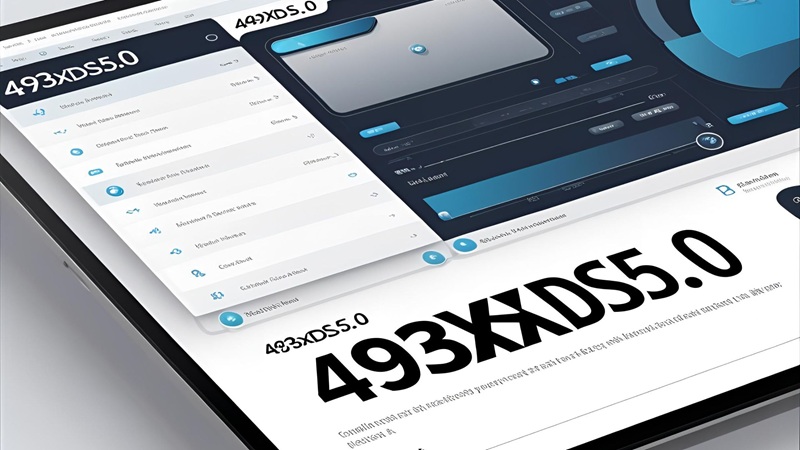what is 493xds5.0 in software: A Complete Guide
Introduction
The software industry thrives on innovation, constant updates, and advanced frameworks that redefine how businesses and developers operate. One such term generating curiosity is what is 493xds5.0 in software. Whether you are a developer, IT professional, or tech enthusiast, understanding this concept can be the key to unlocking smoother workflows, better efficiency, and enhanced integration across digital platforms.
This guide will break down what 493xds5.0 in software means, why it matters, and how it can influence modern software engineering practices. We will also explore its applications, challenges, strategies, and practical tips for leveraging it effectively.
Defining the Basics: What is 493xds5.0 in Software?
When asking what is 493xds5.0 in software, think of it as a versioning and framework standard that relates to compatibility, system optimization, and scalability within digital solutions. The “493” often refers to a release or build reference, while “xds5.0” signals a specific iteration in a line of updates or frameworks.
In practice, 493xds5.0 can:
- Serve as a software version identifier that indicates stability and performance upgrades.
- Represent a compatibility framework ensuring different applications, APIs, or platforms communicate seamlessly.
- Act as a module or library reference developers use when building complex systems.
While technical specifics vary depending on the system or vendor, at its core, 493xds5.0 highlights evolution in software architecture, focusing on performance, integration, and security.
Importance and Benefits of 493xds5.0 in Software
The significance of what is 493xds5.0 in software lies in its contribution to both developers and businesses:
- Improved Stability – Each release often patches bugs and optimizes runtime efficiency.
- Enhanced Security – Newer frameworks address vulnerabilities from prior versions.
- Scalability – Designed to handle more data, users, or integrations.
- Cross-Platform Compatibility – Ensures seamless communication across apps, APIs, and cloud solutions.
- Future-Proofing – Staying updated with 493xds5.0 prepares organizations for upcoming technologies.
For developers, it simplifies debugging and documentation. For organizations, it means reduced downtime and better user experiences.
Real-World Applications of 493xds5.0 in Software
The impact of 493xds5.0 in software can be seen across industries and practical workflows:
1. Enterprise Resource Planning (ERP)
Organizations use it to align databases, applications, and modules for smooth operations.
2. Cloud Platforms
In cloud computing, 493xds5.0 ensures APIs and microservices integrate without performance issues.
3. Application Development
Developers use it as a framework reference when building mobile apps, web solutions, or enterprise-grade tools.
4. Cybersecurity Tools
Its updated standards strengthen security layers against evolving threats.
5. AI and Data Processing
As AI relies on efficient data pipelines, 493xds5.0 improves processing speed and system reliability.
Common Mistakes and Challenges
While what is 493xds5.0 in software sounds straightforward, real-world adoption comes with challenges:
- Ignoring Documentation: Developers often skip technical notes, leading to errors.
- Backward Compatibility Issues: Older systems may not support the new framework without patches.
- Underestimating Testing: Rolling out 493xds5.0 without thorough testing risks failures.
- Poor Change Management: Teams not aligned on updates may face workflow disruptions.
- Over-Reliance on Automation: While automation speeds migration, it cannot replace manual verification.
Recognizing these pitfalls helps organizations avoid costly mistakes.
Strategies for Using 493xds5.0 Effectively
If you’re looking to implement 493xds5.0 in software, consider these strategies:
- Train Development Teams – Provide updated documentation and workshops.
- Start with Sandbox Testing – Deploy in controlled environments before scaling.
- Use Version Control Systems – Track changes and manage rollbacks when needed.
- Align with IT Governance – Ensure updates comply with policies and industry standards.
- Plan Gradual Deployment – Roll out in phases to reduce risks.
- Engage Vendors – Stay in contact with software providers for support and patches.
These strategies not only minimize risk but also maximize the efficiency of adopting new software frameworks.
Future Trends Related to 493xds5.0 in Software
Technology never stands still, and the role of 493xds5.0 in software will evolve alongside future trends:
- AI-Powered Upgrades – Automated updates will predict and fix issues proactively.
- Quantum-Ready Frameworks – Future iterations may support advanced computational models.
- Cloud-Native Integration – Expect deeper compatibility with hybrid and multi-cloud setups.
- Zero-Trust Security Models – 493xds5.0 could play a role in enforcing stricter cybersecurity layers.
- DevOps Synergy – Faster CI/CD pipelines with versioning like 493xds5.0 baked in.
Staying updated on these trends ensures organizations remain competitive in the digital space.
Practical Tips for Leveraging 493xds5.0
- Always read release notes to avoid misconfigurations.
- Maintain backward compatibility patches for legacy systems.
- Prioritize data backups before major version upgrades.
- Use monitoring tools to track system behavior post-upgrade.
- Encourage cross-department collaboration to align IT, operations, and leadership.
Small steps like these can make the adoption of 493xds5.0 smoother and more effective.
FAQs about what is 493xds5.0 in software
Q1: What does 493xds5.0 represent in software?
It usually denotes a framework or versioning update focusing on stability, security, and performance.
Q2: Is 493xds5.0 necessary for all applications?
Not always. Its adoption depends on system requirements and compatibility needs.
Q3: Can older systems support 493xds5.0?
Some can, but many require patches, updates, or middleware for smooth integration.
Q4: How is 493xds5.0 different from previous versions?
It typically includes bug fixes, enhanced security, and improved scalability.
Q5: What industries benefit most from 493xds5.0?
Industries like finance, healthcare, cloud computing, and AI rely heavily on stable frameworks like 493xds5.0.
Conclusion
To wrap up, understanding what is 493xds5.0 in software goes beyond technical jargon—it’s about recognizing how software evolves to meet modern needs. This framework or version reference is tied to stability, security, and integration, making it valuable for developers, organizations, and users alike.
By embracing its updates, learning from common mistakes, and following best practices, businesses can not only adapt but also thrive in the rapidly changing digital world. Whether applied in cloud systems, AI, or enterprise solutions, 493xds5.0 is more than just an update—it’s a stepping stone toward future-ready innovation.



Post Comment